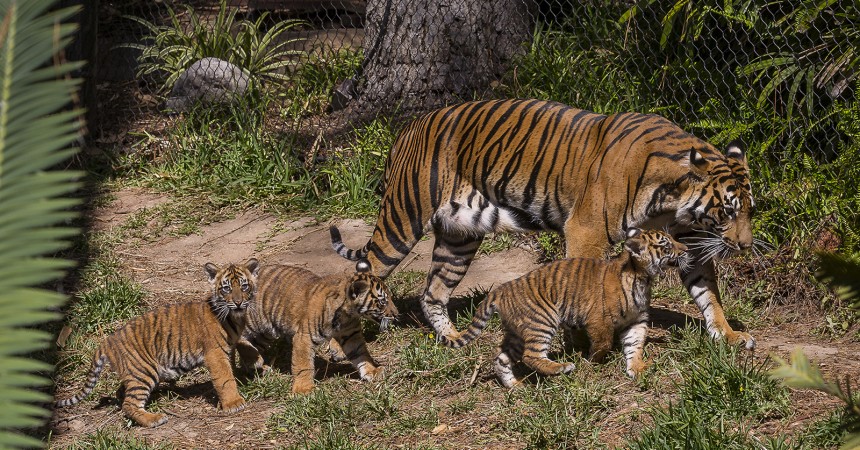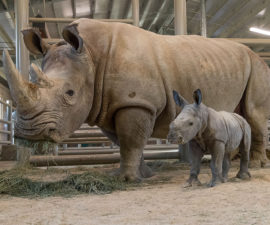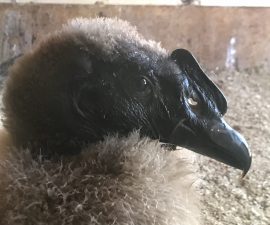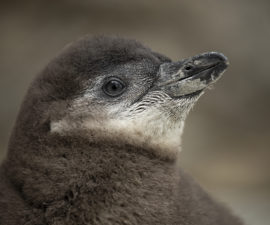This morning (April 26, 2016) at the San Diego Zoo Safari Park, the cute factor was multiplied by three when a trio of tiger cubs made their public debut in the maternity exhibit at Tull Family Tiger Trail.
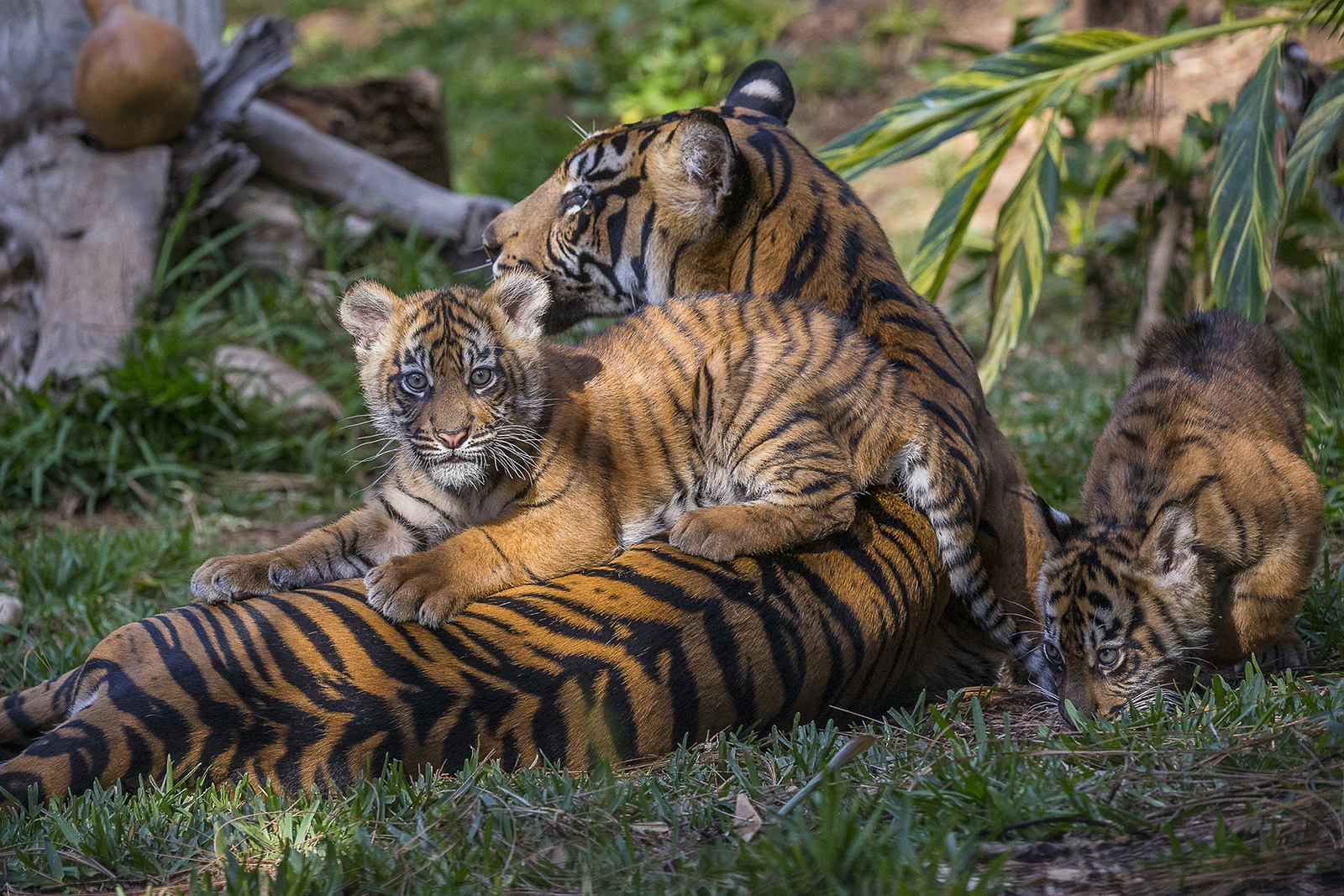
Adult female Sumatran tiger Joanne and her three 3-month-old cubs—Nelson, Cathy and Debbie—walked, stalked, pounced and played throughout the habitat. The three cubs also chewed on the plants and were curious about the shallow pool in the exhibit.
This is the first litter of cubs that Joanne has raised, and they will be on exhibit at Tiger Trail every day from 9 a.m. to noon.
“Joanne is doing a wonderful job with this litter of tiger cubs,” said Lori Hieber, senior keeper, San Diego Zoo Safari Park. “She’s a doting mother, very tolerant, very patient with them. She’s doing everything that we would hope.”
The three cubs were born on January 28, 2016, and each is developing its own unique characteristics. Nelson, the only male in the litter, is the largest and is often calm; while his sister Cathy is typically the most vocal, and can often be heard calling to the other tigers. Debbie, while initially the smallest, is now gaining in size and weight; and she is the boldest, most adventurous of the three.
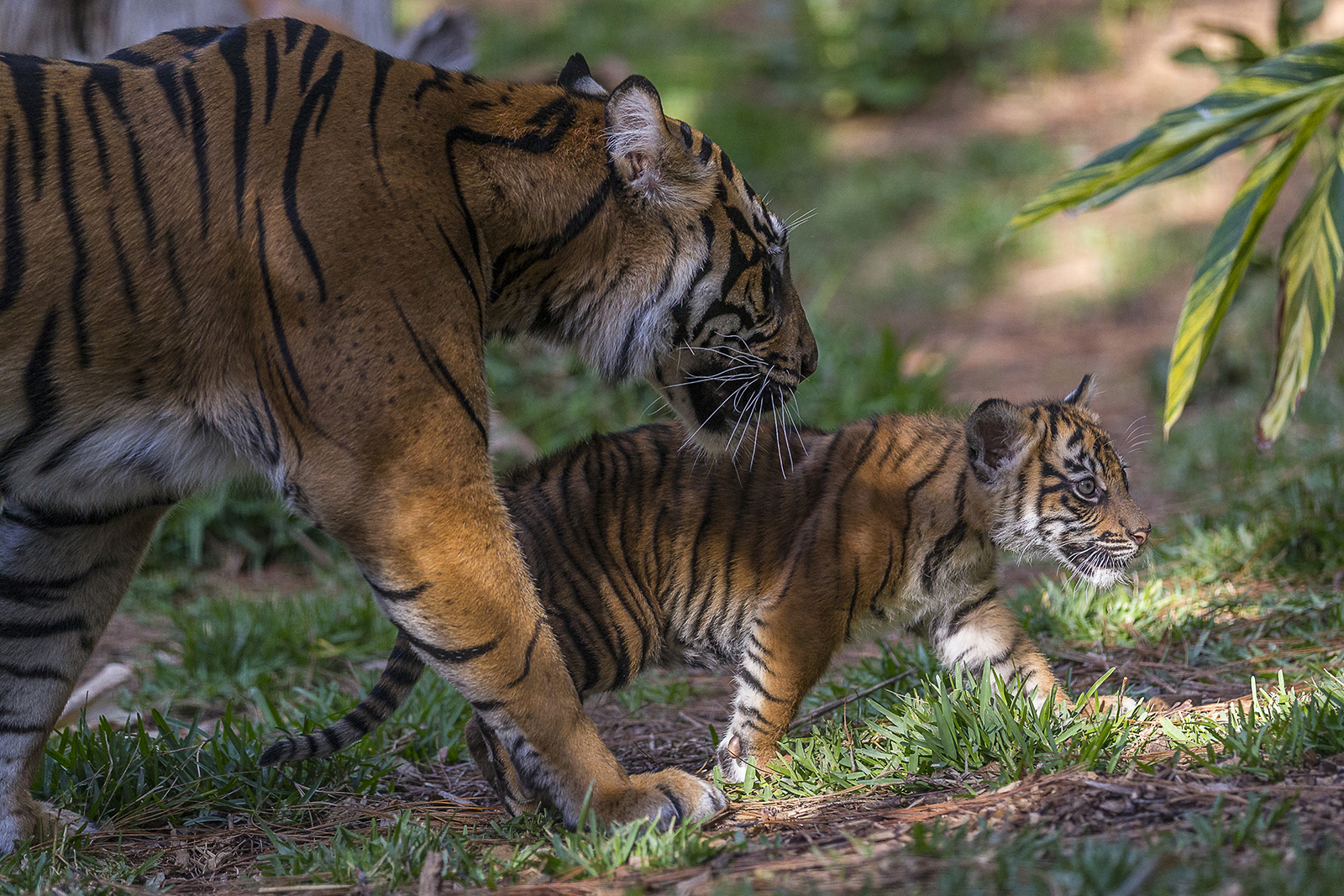
The cubs are still nursing from their mother and are expected to continue for several more months, but they have been introduced to solid food, including beef heart and beef shank.
The Safari Park is currently home to eight Sumatran tigers—including Joanne’s first cub, Suka, a male who is now 7 months old. There are fewer than 350 Sumatran tigers in the wild, and that number continues to drop. Scientists estimate that this species could be extinct in its native Sumatra by 2020, unless measures are taken to protect and preserve it.
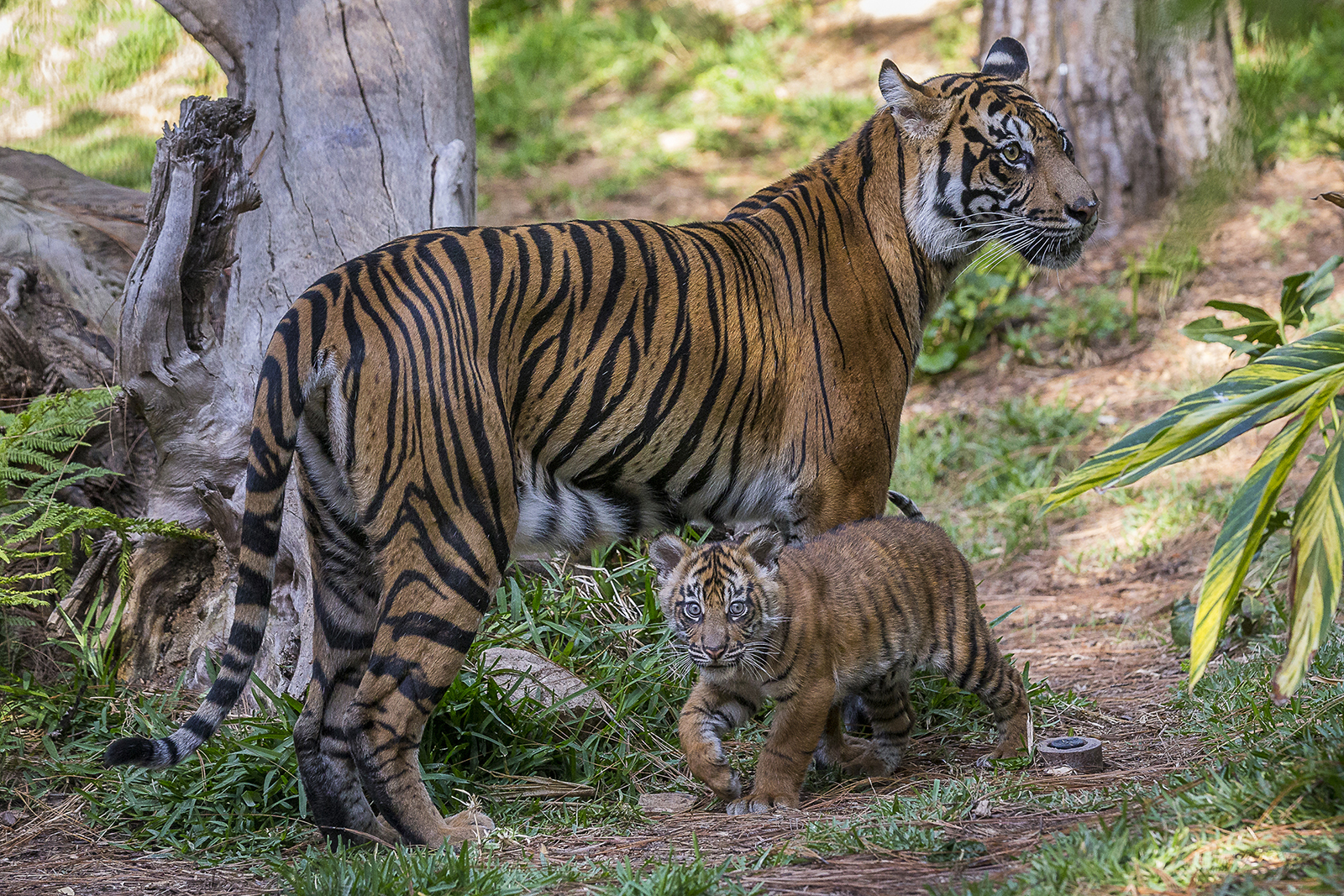
Tigers face many challenges in the wild, from loss of habitat to conflicts with humans, but the biggest threat continues to be poaching. Tigers are killed by poachers who illegally sell tiger body parts, mostly for folk remedies. People can help protect wild tigers by avoiding products that harm tiger habitat and refusing to purchase items made from endangered wildlife.
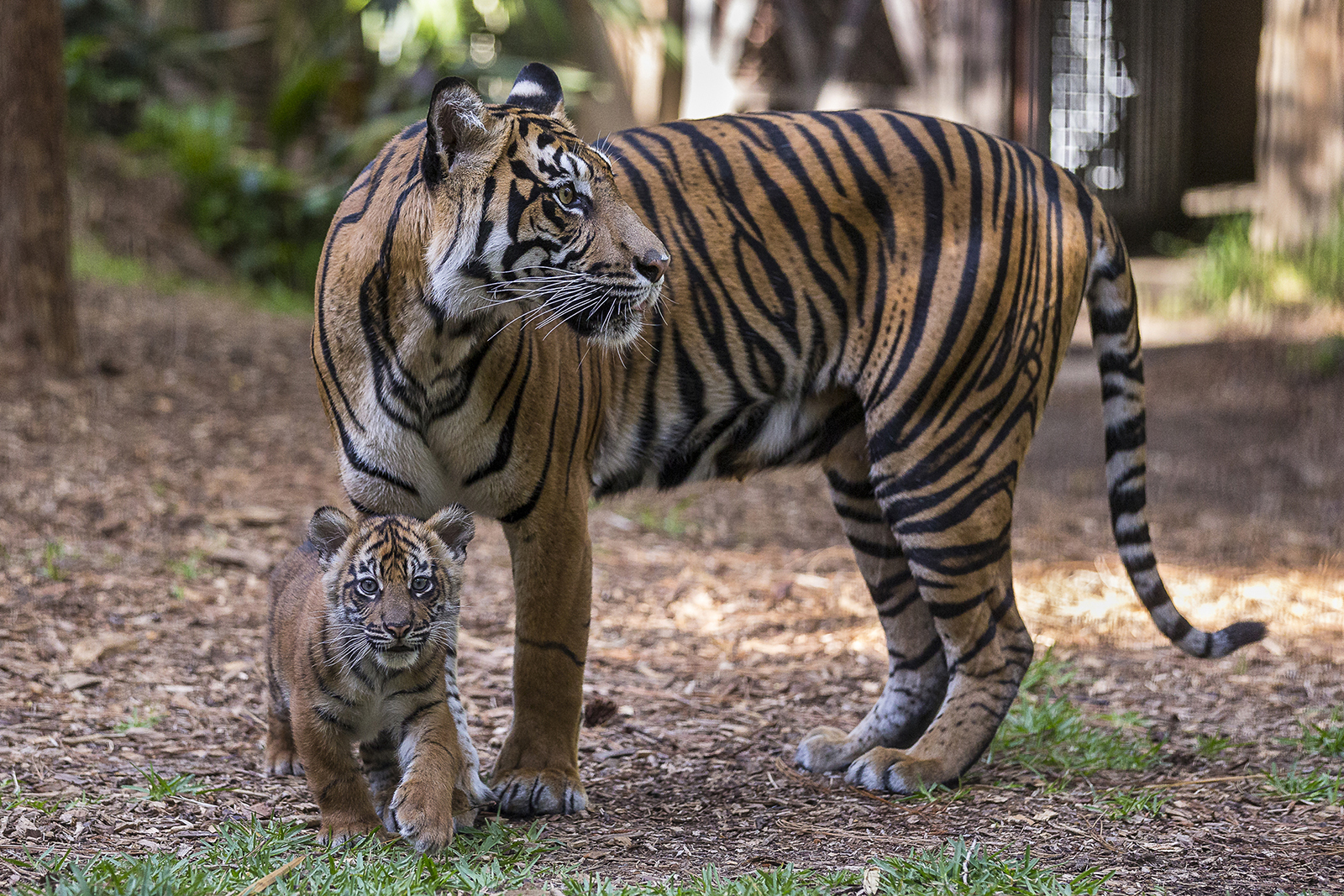
San Diego Zoo Global assists the U.S. Fish and Wildlife Service and other enforcement agencies and conservation organizations to help stop wildlife trafficking and has provided scientific expertise in cases involving tiger parts.

